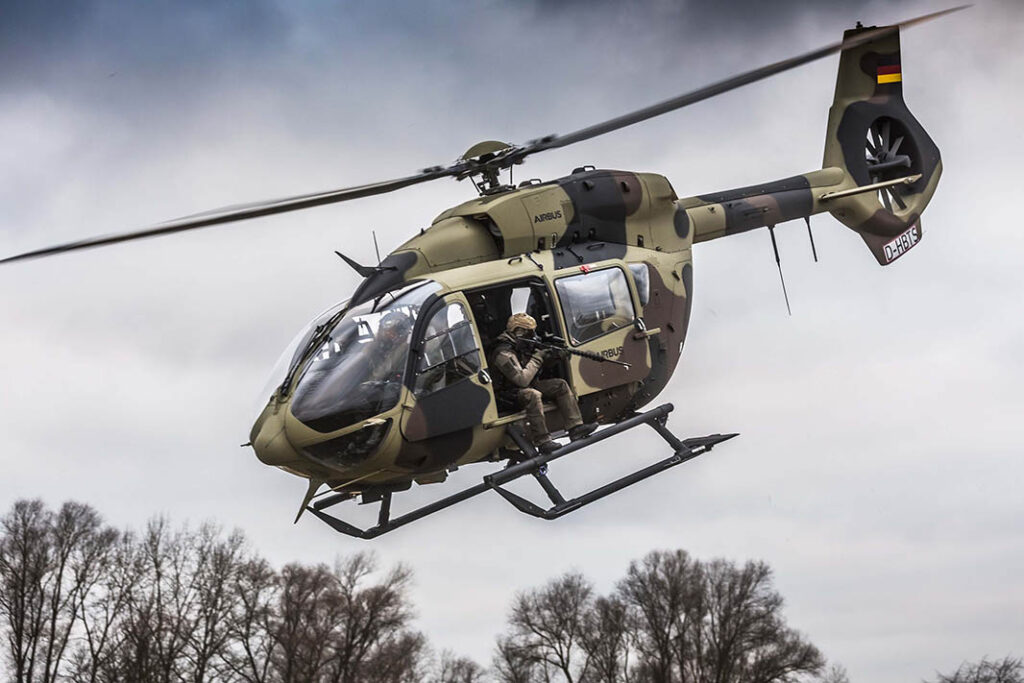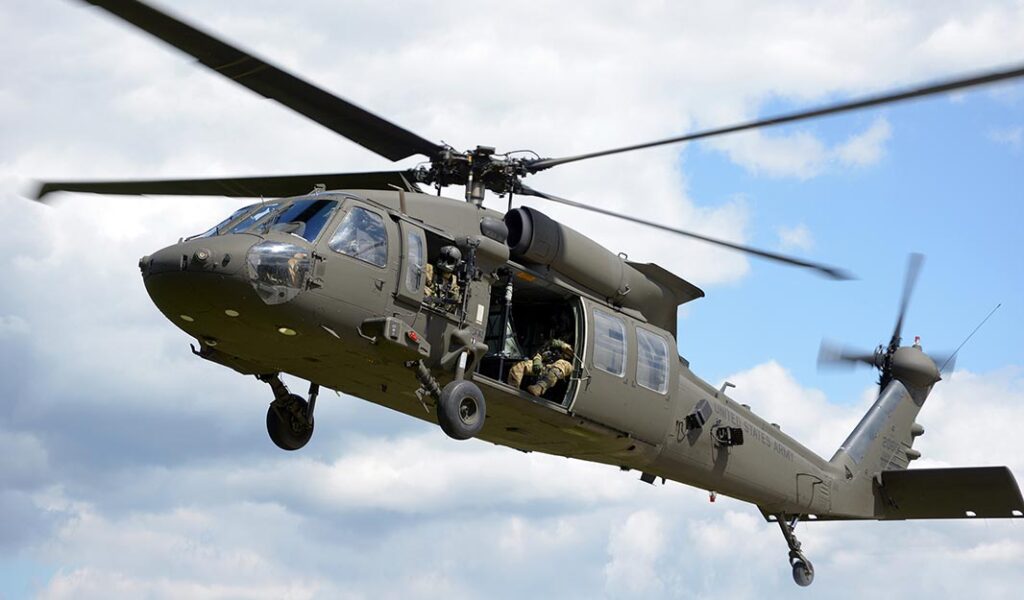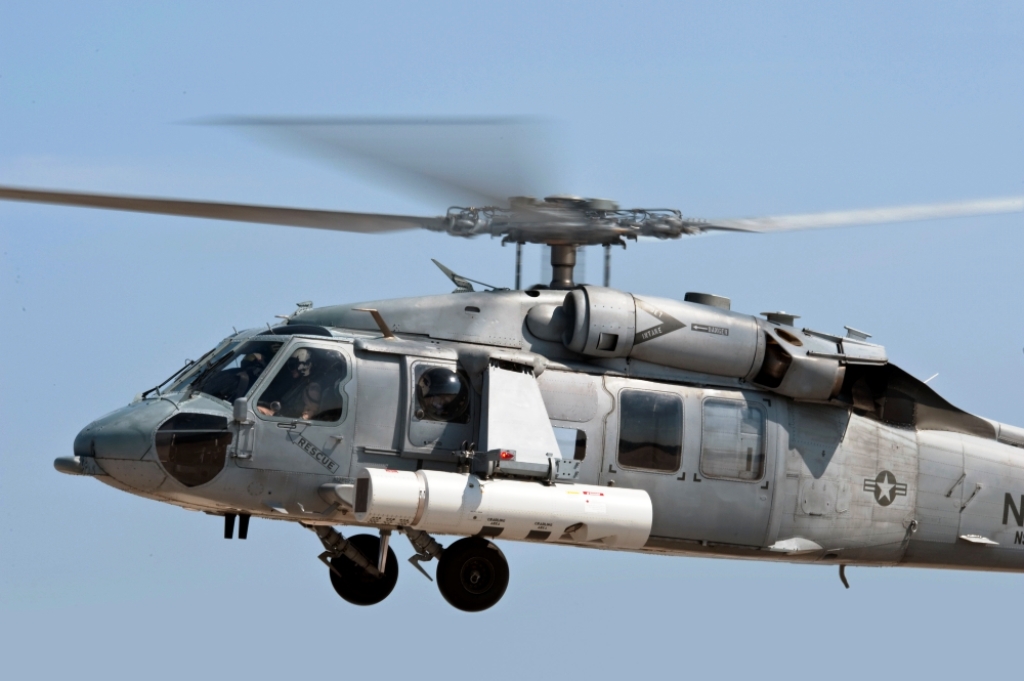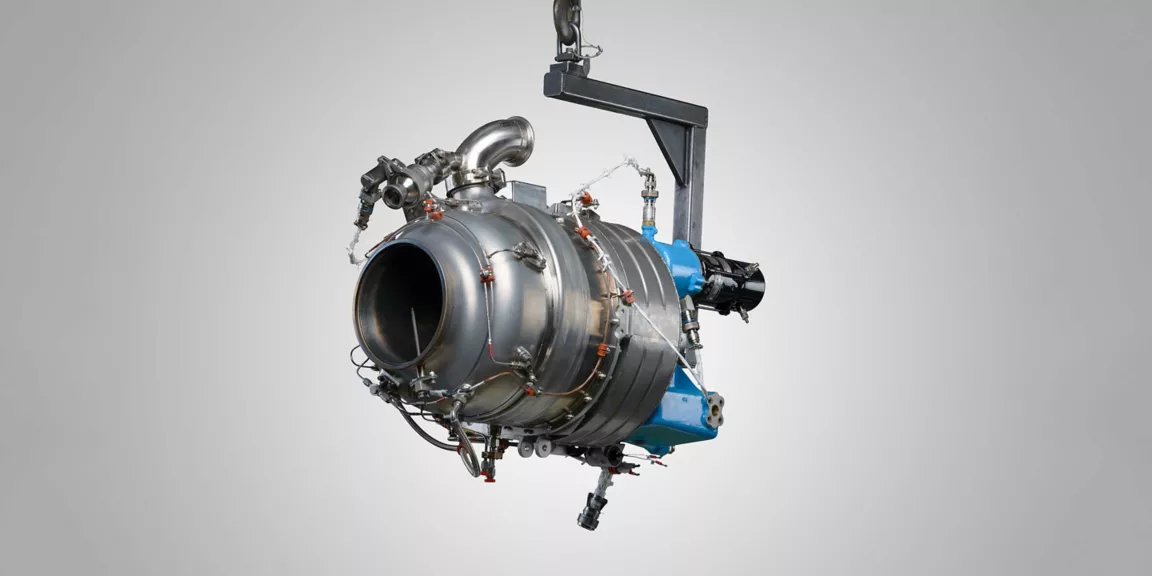The role of the military helicopter is evolving. New technologies and changing mission demands are triggering a move towards lighter, more adaptable multirole platforms. Traditional boundaries between attack, scout, and support/utility roles are increasingly being blurred.
The global military helicopter market has rarely been in such a state of flux. Whereas for decades it seemed that the US Army’s ‘big three’ platforms, the AH-64 Apache, UH-60 Black Hawk and CH-47 Chinook, dominated proceedings, the result of increasing costs, both acquisition and operating, and a stream of ‘lessons identified’ from the ongoing conflict in Ukraine threatens to shake this long-established dominance. Indeed, the very concept of helicopters for specific tasks now appears increasingly less certain.
The pre-eminence of dedicated attack helicopters has been challenged recently by the emergence of the unmanned aerial vehicle (UAV) as a key battlefield presence, in both the ‘find’ and ‘fix/finish’ categories.
The CH-47 Chinook remains, in its current ‘digital’ incarnation (CH-47F Block II), the most popular heavy lift helicopter currently in production. The even more powerful CH-53K King Stallion remains an expensive ‘rare bird’ with only the US Marine Corps (USMC) and Israel willing to stomach the steep acquisition costs (sitting somewhere between two to three times the unit cost of the CH-47F). The King Stallion is very much the heavy lifter the USMC wanted to replace its increasingly obsolete and tired legacy CH-53Es and its requirements set reflects this. It is likely that the Israelis are acquiring the aircraft, at least partially under US funding arrangements, in order to provide Sikorsky with an export customer. The Germans looked closely at the CH-53K as a replacement for their legacy CH-53 fleet but decided to opt to join several European partners in becoming a Chinook operator.
However, the ‘continuum’ of light utility helicopters (LUH) and medium support helicopters (MSH), and their potential to be armed, is starting to blur the lines between what is an attack helicopter, a scout helicopter and a battlefield medium-lift asset. At the smaller end of the scale, the ‘armed scout’ is becoming an increasingly popular choice – especially when complemented by uncrewed systems and loitering munitions. This is exactly the choice the German military has made recently.
Tiger troubles and the rise of H145M
Germany, as a key partner in Airbus Helicopters, was one of the three nations, alongside France and Spain, that funded the development of the Tiger – an armed helicopter that has fulfilled similar, but different missions, for its original user nations. Its subtly different configurations have enabled the aircraft to be tasked as an attack/anti-tank, escort and scout platform. However, Tiger has not been without its problems. Its development was prolonged and expensive, and in the case of one of the early adopters, Australia, littered with issues and complications. The Australians finally lost patience with the aircraft’s low availability and poor reliability, agreeing to retire the aircraft over a decade earlier than expected and switching horses to Boeing’s AH-64E. Germany has elected to follow suit, claiming that they perceived the cost/risk of updating their Tiger fleet to ‘Tiger III’ configuration to be unacceptable. Instead, they have elected to go ‘back to the future’ by ordering a large batch of H145M helicopters – some 60 airframes plus 20 ‘options’.
The H145M offers a flexible and reliable platform. It harks back to the Cold War, to the days before the Tiger, when Germany used a fleet of small and agile MBB Bo105 helicopters in the scout / anti-tank roles. Deployed in large numbers, carrying up to six HOT family anti-tank guided missiles (ATGMs) – broadly equivalent in concept and performance as the US BGM-71 TOW – the highly manoeuvrable Bo105 was tasked with extracting the maximum attrition on Warsaw Pact armoured formations for relatively little cost. If a Bo105 managed to get all six shots off, and achieve at least a couple of ‘kills’, it was probably a fair return. The Bo105 was replaced by the Tiger, in much the same way that the TOW-armed Westland Lynx was replaced by the Apache in UK service, due to fears that the organic short-range air defence (SHORAD) systems increasingly embedded in armoured units made the ‘juice not worth the squeeze’ in terms of risk. A dedicated attack helicopter with improved sensors, longer-ranged stand-off weapons (such as the Hellfire air-to-surface missile) and an integrated gun system – as well as a comprehensive platform protection suite and airframe / cockpit armour – was deemed essential to prosecute repeated attacks on invading units at a tolerable risk. So, what has changed?

Not only has the Tiger proven an expensive and troublesome airframe, with low availability (regularly less than 40%) and often poor supply chain resilience, but advances in technology have enabled smaller, cheaper, and lighter helicopters to carry better sensors and more powerful weapons. The H145M Germany is purchasing will exploit the ‘HForce’ system, equipping the aircraft with a Stores Management System (SMS), weapon pylons, an L3 Wescam MX-15 gimballed optronic sight (with laser range finding, designating, and targeting capability) and a Thales Scorpion Helmet Mounted Display and Cueing System (HMDCS). In terms of weapons, the H145M can carry gun and cannon pods, unguided 70 mm (2.75″) rockets, along with laser guided 70 mm rockets, such as the FZ275. The latter are a true game changer – suddenly a light helicopter, such as the H145M, can carry a relatively powerful load of low-cost, accurate, guided weapons.
In a recent sortie in the H145M, I was able to use HForce, MX-15 and Scorpion to simulate FZ275 attacks on a number of targets of opportunity. It was simplicity itself – find the target on the MX-15, squirt the laser range finder to obtain an accurate range to ‘target’, switch to target mode, place the laser spot on the target, then put the velocity vector on the HMDCS flight display over the firing cue and pull the trigger. Closing to the nominated target, I could select ‘Guns’ and run the ‘pipper’ over the ‘target’ to simulate a strafing run. Heady stuff, but the H145M’s ‘talents’ don’t end there.
The aircraft has also been cleared for carrying and launching Rafael’s SPIKE ER2 anti-tank missile. The SPIKE ER is capable of engaging targets up to 16 km away (if employing a datalink), with a tandem high-explosive anti-tank (HEAT) warhead for attacking main battle tanks (MBTs) or a penetration, blast and fragmentation (PBF) warhead for use against structures. It’s a significant upgrade from the HOT-equipped Bo105. With SPIKE ER2, the H145M can exploit a networked common operating picture (COP) and its powerful onboard sensors to position itself to ambush enemy formations from a relatively safe stand-off distance (up to 16 km) – with its relatively small size and acoustic signature helping it to remain masked, yet with agility and the ability to have a defensive aids suite (DAS) fitted if required. Against perhaps the most pertinent threat of today, UAVs, the H145M can offer a cost-effective intercept capability, employing its gun system or laser-guided rockets – provided, of course, that the aircraft is positioned between the incoming UAV and the intended target. The H145M, like many rotorcraft, doesn’t have the straight line speed to pursue and overtake many UAVs, especially fixed-wing designs, so intercept geometry needs to be considered.
However, of course, the H145M is a multirole machine. Remove the HForce system and the aircraft reverts to being a capable LUH with enough cabin space to carry up to ten (at a squeeze) lightly equipped troops, nearly 2,000 kg of internal supplies or 1,600 kg of external cargo. Retain the MX-15 and cabin-mounted hoist, and the H145M becomes a credible search & rescue (SAR) platform for disaster relief and other tasks supporting civil authorities. The US Army National Guard uses the H145 for exactly these types of tasks. As the LUH-72 Lakota, the helicopter is employed within the US for disaster relief and border patrol style duties. This enables the service to offload the tasking on the larger and more expensive platforms, such as the UH-60 Black Hawk, for more combat-orientated overseas roles.
Differing approaches to multirole: UH-60 and NH90
The venerable Black Hawk was, and remains, the epitome of the multirole helicopter. There are few roles that Sikorsky’s stalwart hasn’t fulfilled over the decades since its first flight in 1974. Its immediate predecessor, the UH-1 Huey, saw service as a troop transport, gunship, command and control (C2) machine and in the medevac role.

The UH-60 has completed all of those tasks and more, adding electronic warfare, combat search and rescue (CSAR) and VVIP to its roles. It has also become a crucial platform for the Special Operations community in the US, where, as the MH-60K/M Direct Action Penetrator (DAP), it brings almost AH-64 levels of firepower at the speed and range required. Most famously, of course, it has also been heavily modified into an unacknowledged low-observable special forces (SF) insertion platform, as apparently employed on the mission to kill Osama Bin Laden in Pakistan. The basic UH-60 airframe has also been adapted for maritime use – the MH-60R Seahawk has become the default anti-submarine warfare (ASW) helicopter for the US Navy, while the MH-60S is the maritime multirole specialist – capable of littoral insertion, anti-surface warfare (ASuW), maritime interdiction and the more prosaic moving personnel and cargo around a deployed fleet.
Where the Huey and the Black Hawk have led in the multirole arena, others have followed – albeit with varying results. In Eastern Europe, the mass produced Mi-8/17 family has been employed as a multirole platform, as has the Puma/Cougar lineage. The NH90 was, perhaps, the peak of Western European attempts to deliver a true multirole helicopter. Although on paper the NH90 is a success, with some 600 orders, it has developed something of a reputation for being – much like the Tiger – expensive, unreliable and with poor logistics support. Belgium is the latest nation to announce that it is prematurely retiring its tactical transport helicopter (TTH) variant of the aircraft, following closely behind Australia, Norway and Sweden.

The NH90 is, perhaps, a victim of trying to be ‘all things to all people’ with a number of sub-versions trying to cater to the diverse requirements of its customers. The aircraft is available in TTH form for air-mobility missions (equipped with a ramp) and as the maritime-optimised NATO Frigate Helicopter (NFH). However, several sub-variants of each have been tailored to suit the needs of individual customers. Therefore, it could be suggested that although the NH90 family is a ‘multi role’ airframe, each interpretation of the aircraft is somewhat bespoke. This mixed fleet has been part of the NH90’s resilience and supportability woes. Unlike the UH-60, which has a global fleet of over 5,000 airframes and huge primary customers in the US Army (over 2,000) and US Navy (500+), the NH90 has dozens of subtly different ‘fleets within a fleet’, creating a logistics headache, and in some cases, bottlenecks. A true multi-role machine should, in my opinion, be capable of switching seamlessly between a number of roles and missions rapidly, often between sorties.
Looking ahead
Such seamless mission/role switching is very much what the future of the multirole helicopter looks like. The US Army has enshrined the Modular Open Systems Approach (MOSA) as a requirement for all its new equipment. While some enduring designs, such and the CH-47F and UH-60M can accommodate some aspects of MOSA, only a new ‘born digital’ design can be truly ‘open’. The Bell MV-75 (formerly known as V-280 Valor) tiltrotor will be the first of the new breed of highly adaptable vertical lift machines. It has been designed from first principles to be a multirole aircraft – covering many of the missions assigned to the UH-60M, albeit with far greater speed and range. The US Army has acknowledged that the requirements from the SF community have already been ‘baked into’ the MV-75’s baseline, making it a true multirole option from the start of its service life.
In Europe, the issues that have marred the NH90’s career have been noted by the user nations. Many have signed up to the Next-Generation Rotorcraft Capability (NGRC) programme, which is currently defining the requirements for a MSH to replace the NH90, Puma/Cougar, Mi-8/17 and Merlin in the 2030s. A series of studies are currently underway to support the requirements definition; some, such as propulsion and air vehicle configuration, have been given to industry to complete, while others are retained at the government level. The NATO Industrial Advisory Group (NIAG) has completed a number of studies supporting next-generation rotorcraft (NGR) work, including examining how to ensure the NGR is a multirole as possible. MOSA is key, but NIAG has also highlighted modularity at the platform level as being a key tenet of multirole flexibility. The potential to change aircraft configurations in the field – including engines, DAS, degraded visual environment (DVE) sensors and rotor blade characteristics – is being assessed. A vertical lift platform that that can rapidly adapt to be optimal for any mission that it is called upon to deliver is multirole nirvana and seemingly the next logical step to take. The challenge will be ensuring that regulatory agencies are suitably assured that multiple configurations can still be certified as airworthy.
The flexibility of the helicopter has ensured that there are few ‘one trick ponies’. With the exception of dedicated attack helicopters, most rotorcraft are multirole to one extent or another – some are just ‘more multirole than others’. The sweet spot seems to be in the LUH/MSH area, where aircraft have enough room to carry different payloads, be equipped with a variety of subsystems and have the required power to continue to deliver effective military output.
The future moves towards MOSA and platform modularity will doubtless make vertical lift adaptability even more broad, and being genuinely ‘multirole’ will, in time, be viewed as just another rotorcraft attribute, alongside the ability to hover.

Paul ‘Foo’ Kennard
Author: Paul ‘Foo’ Kennard is a former UK RAF Helicopter pilot, Tactics & Electronic Warfare Instructor and Operational Evaluation pilot. He has seen operational service in Northern Ireland, Bosnia, Kosovo, Iraq and Afghanistan. He now runs his own independent consultancy company, Ascalon, providing specialist technical and user input into a wide variety of defence & aerospace programmes for governments, NATO and the broader defence industry; and operates as a freelance journalist.



